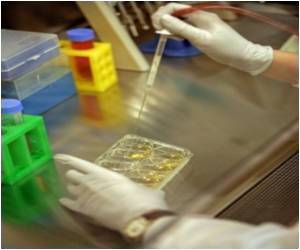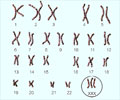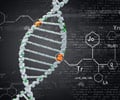Two pathways through which chromosomes are rearranged in mammalian cells was identified by biologists. The same was reported in Nature.

The two pathways rearrange chromosomes by recombining DNA repeats that are naturally found in the genome, Dr. Hasty said. DNA, the chemical substance of genes, denatures and replicates during cell division and other processes. Repeats are sequences of DNA that are duplicated.
Both pathways are important for the synthesis of DNA. "Therefore, we propose that chromosomal rearrangements occur as DNA is being synthesized," Dr. Hasty said.
The experiments were conducted with mouse embryonic stem cells grown in tissue culture. The team measured the incidence of DNA repeats recombining in normal cells. This is called "repeat fusion." The scientists then looked for incidence of repeat fusion in cells affected by several genetic mutations. This analysis identified the two pathways and showed large, complicated rearrangements that involved DNA repeats on multiple chromosomes.
During cell division, DNA is coiled into pairs of threadlike structures called the chromosomes. Each human cell has 22 numbered pairs of chromosomes called autosomes. The sex chromosomes are the 23rd pair in cells and determine a person's gender. Females have two X chromosomes, while males have an X and a Y chromosome.
"We hope the new findings will help us better understand the mechanisms that cause chromosomal instability, which causes some cancers in people," Dr. Hasty said.
Advertisement
Advertisement











